Both on-page and off-page SEO play a crucial role in helping your website reach the heights of search engine results.
But how do they differ? What factors influence each of them?
We have our complete guide here to answer these questions.
What is On-Page SEO?
On-page SEO (a.k.a. on-site SEO) is a set of approaches aimed at optimizing web pages to help them rank higher in search engines and receive relevant organic traffic. These approaches include changes to content and a page’s source code, which is also a part of technical SEO.
Let’s give you a quick sneak peek into a couple of on-site SEO techniques.
On-Page SEO tactic — Content optimization through keyword gap
One of the reasons your page might not be in the top three (or even in the top ten) search results is that it doesn’t rank for the keywords its competitors do.
In this case, a smart move would be to look at the keyword gap and cherry-pick the search terms that could boost your page’s visibility. You can use a Semrush report to do it.
Here’s how it works.
First, you need to add the website URL you want to analyze along with search engine result pages competing with it. We added our top-ranking article on link building statistics, plus a competing piece from Authority Hacker.
And here, you can see the report showing the top opportunities for our page, keyword details, and keyword overlap:
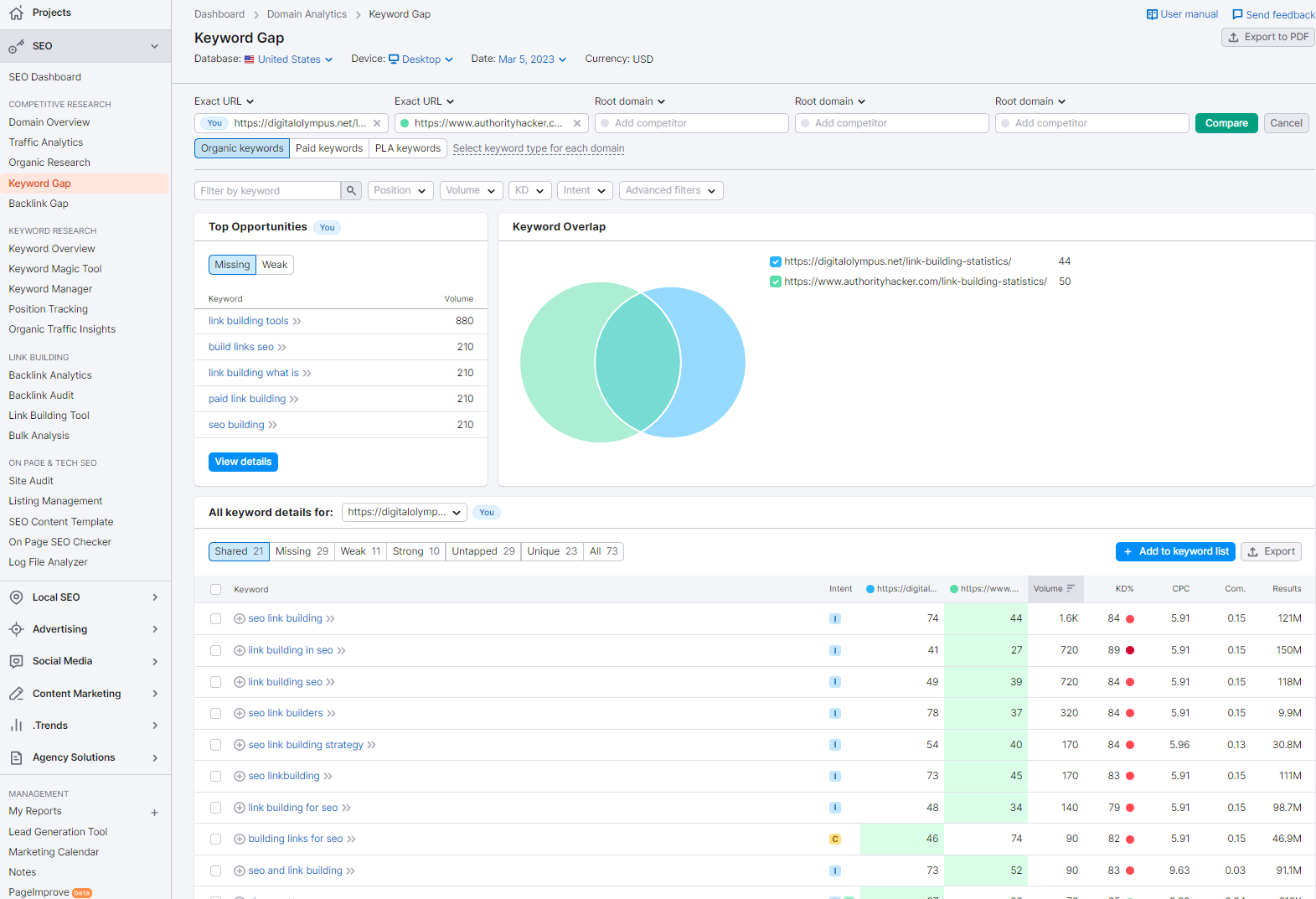
The Keyword Gap report from Semrush.
Just to clarify, weak opportunities include those keywords your competitor ranks higher in SERPs than you. So, these keywords will be your primary focus to use when optimizing your content.
On the other hand, missing opportunities are search terms competing pages rank for, and you don’t.
This tactic is more content-related. Now, let’s consider one focused on optimizing the source code.
On-page SEO tactic — Page title optimization
A title tag remains one of the crucial on-page SEO factors. In particular, its length (according to some resources, it shouldn’t be longer than 70 characters).
You can manually optimize your page titles by making changes to the source code, but if your website has 100+ pages, managing them all by hand would be counterproductive (and time-consuming). Besides, not all page titles will require optimization.
Instead, Ahrefs offers a shortcut report in Site Audit with updates on website issues, including page titles.
Here, for instance, we have Digital Olympus blog pages with title tags longer than 80 characters:
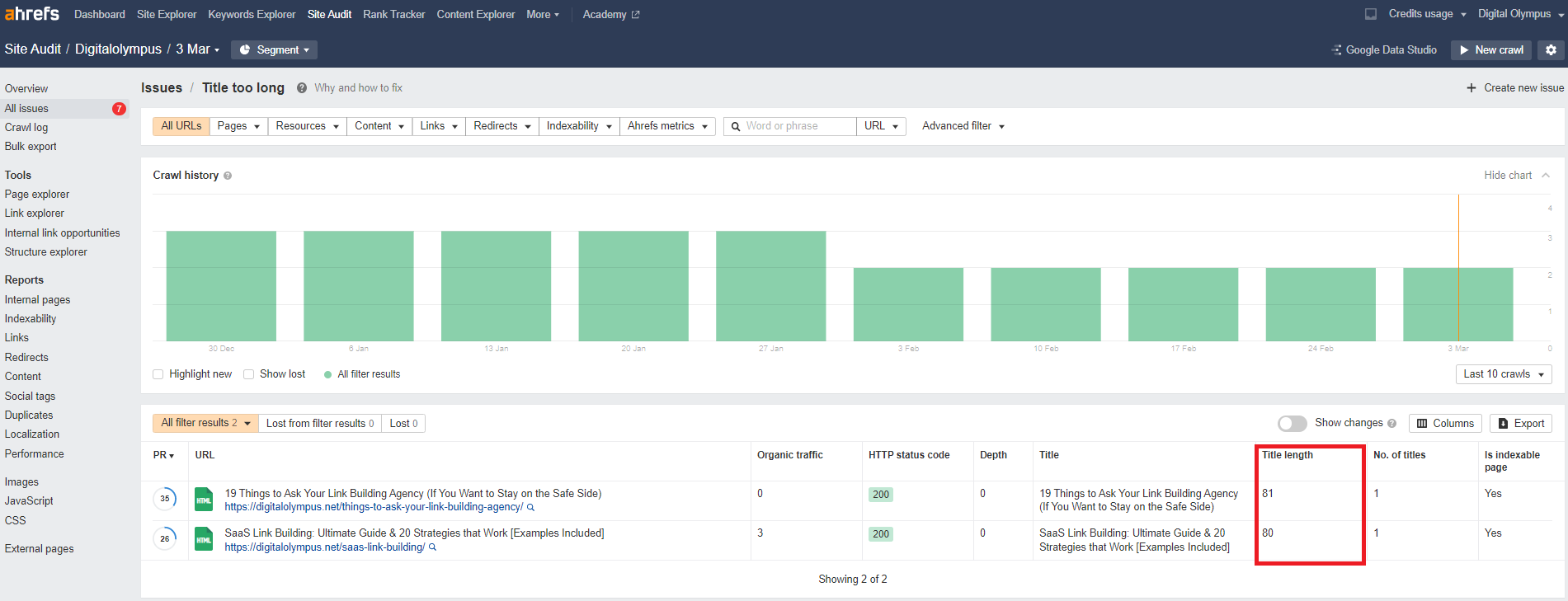
Ahrefs' Site Audit report on title tag issues.
And here’s the SERPs snippet featuring the first page from the above-mentioned report:
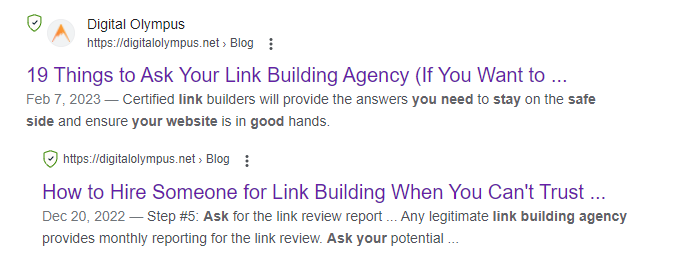
Google search results showing an excessively long title tag.
So, we can conclude that this page’s title tag definitely needs to be shortened so that the searchers see it in its entirety in SERPs.
Now that we’re through with our examples, let’s talk more about key on-page SEO factors.
6 On-Page SEO Factors to Pay Attention to
Before we begin, let’s take a look at an overview of all six factors and why they are essential:
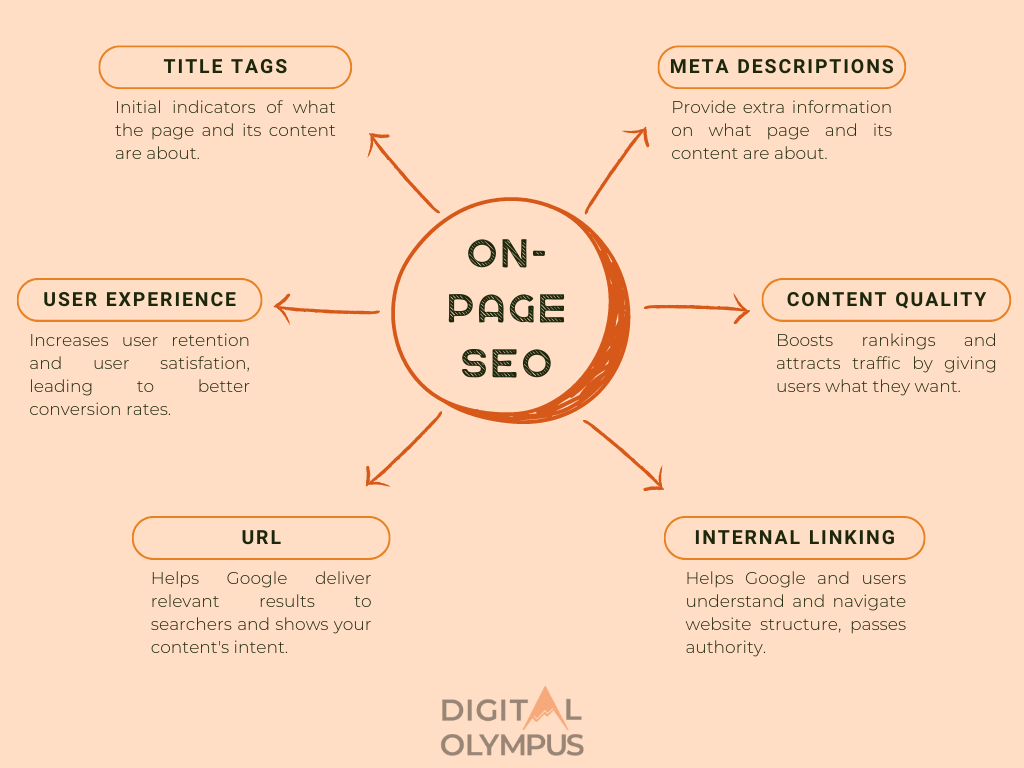
Six on-page factors and their roles.
Now, let’s break down each of the elements at play and discuss some SEO best practices for them.
Factor #1: Title Tags
A page title (a.k.a., a title tag) is a gist of a web page appearing in SERPs and at the top of the browser window. It helps both Google and searchers understand what the page is about.

Example of a title tag from Google search.
Google has the following rules governing title tag optimization:
- 50−70 characters (this is an ideal length, even though Google’s Gary Illyes shared that the number of characters is not limited because title tags are measured in pixels);
- No keyword stuffing (use descriptive terms instead, but make sure to include your target keyword);
- The title tag should be relevant to the page;
- Make your page titles branded — e.g., A Guide to Local Link Building — Digital Olympus (although you may notice that not all websites ranking in the top three SERPs have a branded title tag).
The next factor under consideration is related to the title tag.
Factor #2: Meta descriptions
A meta description is an HTML tag summarizing the content on a web page. It should provide Google and the searcher with enough information to understand what a page is about.
Meta descriptions appear right under the title tag in SERPs:

Example of a meta description from Google search.
These meta tags are usually added manually so that Google recognizes and features them in search results. However, it doesn’t always happen.
Here, we have an example of such an exception:

Example of a meta description auto-generated by Google.

Example of a meta description in HTML.
SEOs explain this with the fact that Google’s generation of meta tags is entirely automated, and the algorithm creates them based on the page’s content and references to it from the web.
Google also confirms it but says it will sometimes use the meta description tag added manually if it clarifies the content better.
The chances of your meta description being used by Google will increase if you employ the following recommendations:
- Use the main search term but don’t resort to keyword stuffing;
- Don’t reuse meta descriptions for similar pages;
- Summarize the entire page;
- Make it specific and detailed.
With meta descriptions clear, let’s move on to the third factor.
Factor #3: Content quality
Google is very specific about the quality of content, as it’s probably the most important factor in SEO. On Google Search Central, you can find a long list of questions a content creator should ask themselves to assess the content’s quality.
Here are these guidelines briefly summarized.
- The information in the content should be original.
- The overview of the topic should be comprehensive (but also not deviate from search intent).
- The content should provide substantial value to the searcher.
- The content should be evidence-based.
- You should organize the information in a clear and error-free manner.
- The content should display well on mobile devices.
In short, according to Google, you have great content if:
- You are not ashamed of sharing it with others (i.e., on social media or other resources).
- The reader is satisfied after coming in contact with your content, having learned everything they needed.
Google also uses E-A-T (expertise, authority, trustworthiness) factors to evaluate content quality. However, recently, it added another component to this concept — experience.
Essentially, content should be produced from an expert’s standpoint, e.g. interacting with a product and weighing in on its pros and cons. In other words, Google expects you to take a more real-life, human approach to content as opposed to mindlessly rewriting facts from the internet.
It’s also worth saying that nowadays, real-life expertise has become even more important:
«In the age of AI-generated content and an abundance of poor quality information, demonstrating expertise, authoritativeness, and trustworthiness through high-quality content has become more crucial than ever. The value of content is no longer measured solely by its quantity or speed of production but by the depth of knowledge and insight it provides. In this landscape, content quality is not just a luxury but a necessity to establish credibility, build trust, and create a lasting impact.» — George Chasiotis, Managing Director at Minuttia.
Factor #4: Internal linking
An internal link is a link coming from another page on your website.
Here’s what internal links look like in HTML:

How internal linking appears in HTML.
Internal links are a part of your website’s architecture, specifically helping Google to:
- Discover new pages on your site.
- Understand what a page is about.
- Pass link equity between website pages.
Google also confirms that placing text-based internal links is the safest bet for its crawler to find and index pages.
However, it doesn’t mean you should stuff your content with as many inbound links as possible.
In fact, Google has recently updated its best practices for links, having specified that:
- Internal links should be relevant to the content they are placed in.
- The anchor text should help both people and the search engine to easily navigate your website.
And here are some internal linking mistakes to stay away from:
«We have been working on internal linking in the past few months on our blog posts. Some of the bad practices we found:
- Too many internal links in one article, so the link juice was splitting into too many pieces.
- Linking to the same target page more times in one article. Sometimes even with different anchor texts.
- Linking to the different target pages but with the same anchor text.
- Linking from the header of the article.
It is also good to run an internal linking audit, for example in Ahrefs, which can show you orphan pages (pages without any internal links) or pages with redirect and broken internal links." - Stanislav Farkas, Off-Page SEO Specialist at Whatagraph.
Note that Google doesn’t indicate a specific amount of internal links per page, but there should be at least one.
Factor #5: URLs
A URL (uniform resource locator) is essentially the address of a web page.
It would be correct to say that URLs are a ranking factor, but they don’t play as big of a role as content quality, for example.
So, how do you know you should optimize your URLs?
It will depend on what competing pages in SERPs have in their URLs (we often see inaccurate URLs for our clients' target pages, so that’s how we know they should be optimized).
So, let’s say your page ranks for the keyword link building statistics, but you don’t have this keyword in your URL (or have a modification of it). In this case, you should look at the top ten pages in SERPs:
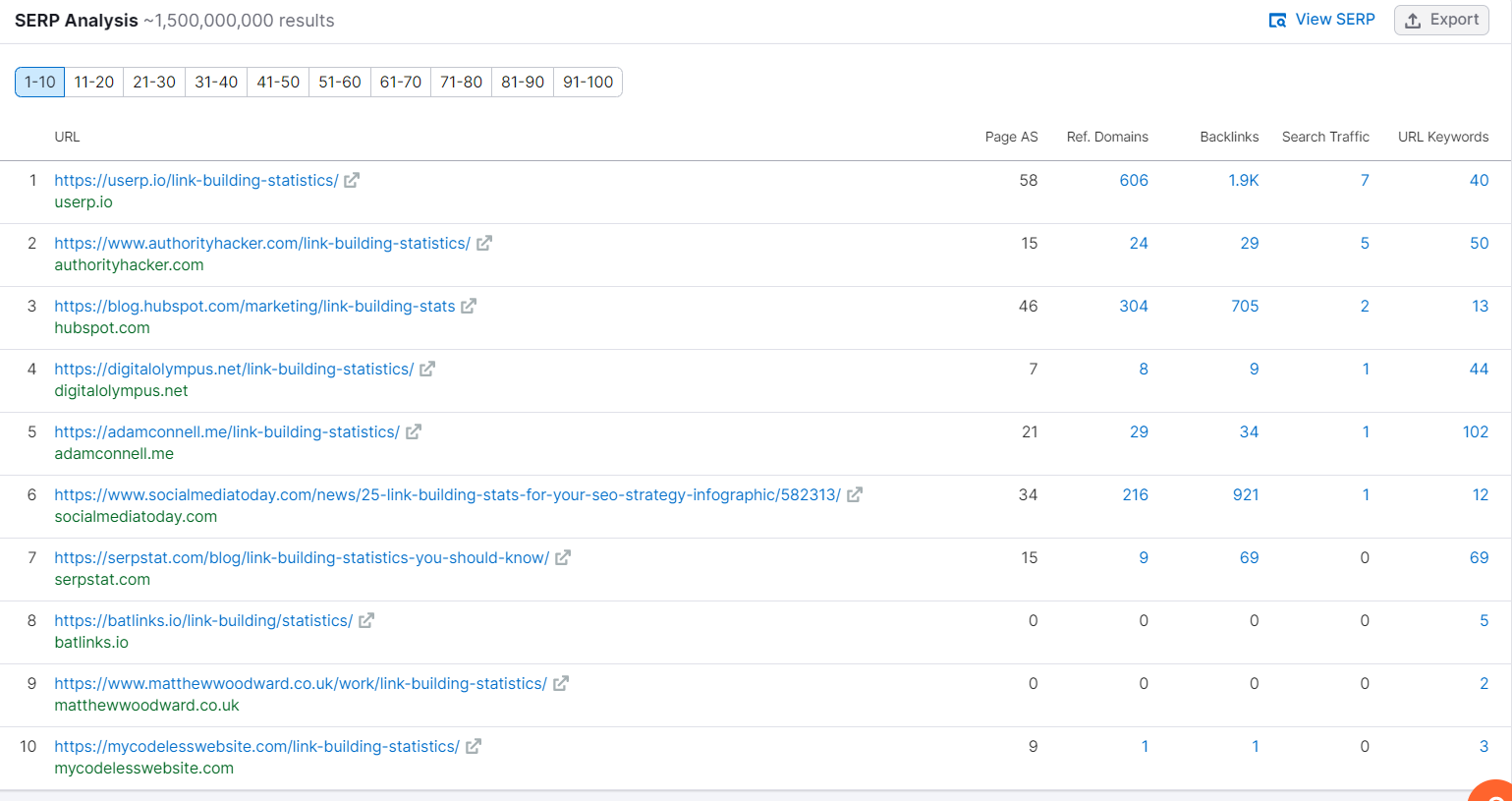
Top ten search engine result pages for the keyword ‘link building statistics'.
So, it would make sense to place this search term in your page address as well.
Note that you should also observe general best practices for URL structure, such as not including prepositions, dates, or any numbers.
Factor #5: UX
UX is one of Google’s Core Web Vitals — a set of metrics used by the search engine to measure user experience on the website.
The key feature Google wants all websites to adopt is usability. In other words, it’s important to keep your web pages clean and well-structured for effortless navigation.
Here, the following factors are at play:
- Breaking content into biteable pieces using short paragraphs and bullet lists;
- Diversifying content with illustrations, graphs, infographics, etc. (keep in mind that they should be lightweight);
- Minimizing JavaScript and CSS;
- Testing page speed and optimizing pages to make them load faster.
We can also add optimization for mobile as another component of UX, as Google predominantly uses the mobile version of page content for indexing and search engine ranking.
Now that we discussed the key six on-page SEO factors, let’s move on to off-page optimization and its peculiarities.
What is Off-Page SEO?
Off-page SEO summarizes strategies implemented outside of a website to boost its rankings. The main objective of these strategies is to improve your site’s authority in the eyes of search engines.
As we did with on-page SEO, let’s review some tactics used for off-page search engine optimization.
Off-page SEO tactic — find link building prospects
Building links does have an impact on your ranks (even though John Mueller mentioned links would be less important for a site’s ranking in the future). However, it’s also one of the most tedious activities in digital marketing.
That is when you don’t know where to look for links.
One of the tactics link builders use, including us at Digital Olympus, is searching for prospects with the help of the Link Intersect tool in Ahrefs.
Essentially, this report shows you who’s linking to your competitors but not to you. Here’s what you can see in the results:
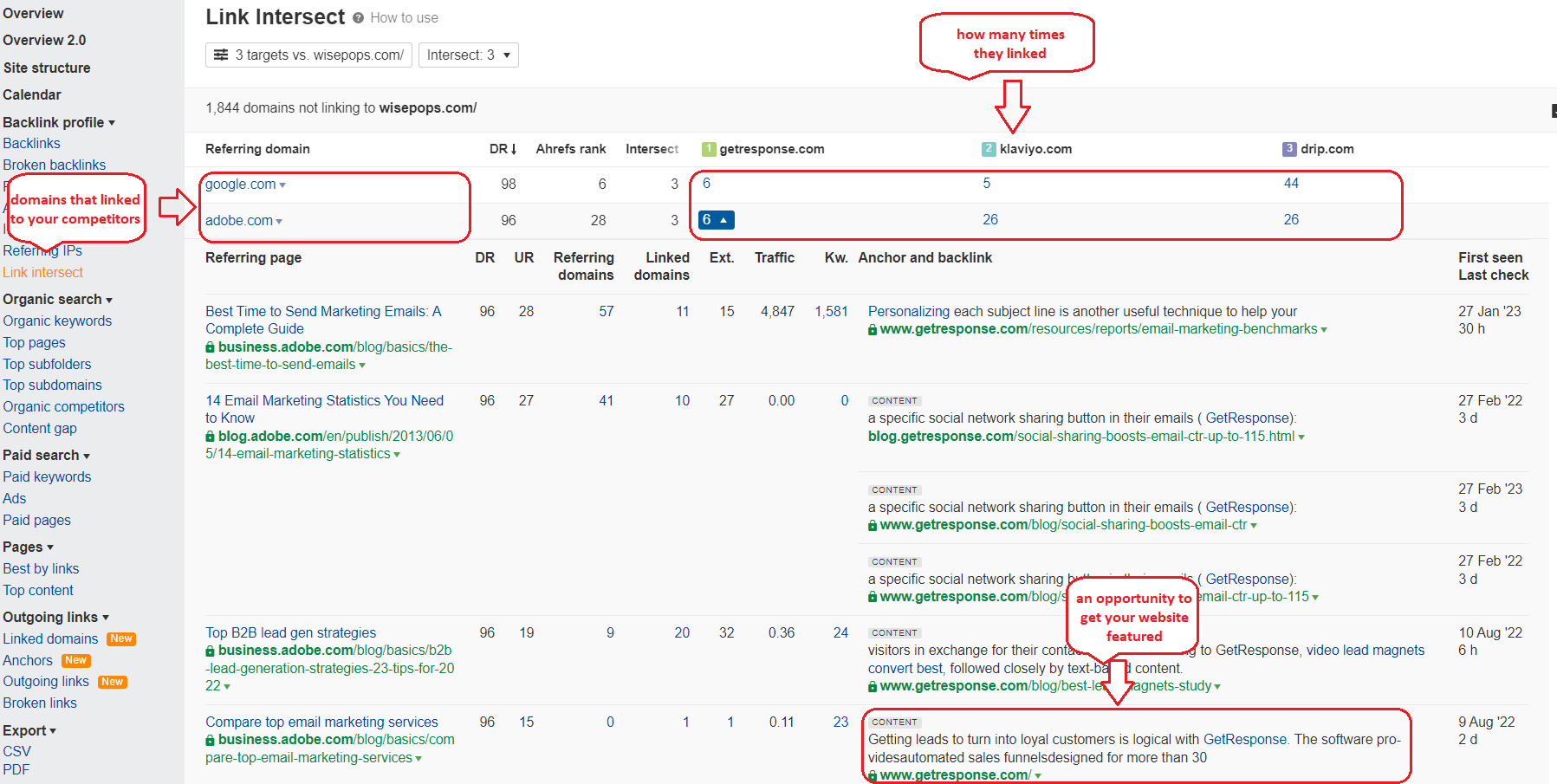
How Ahrefs' Link Intersect tool works.
So, for the example website here, we easily found an opportunity to get a link right next to their competitor since their tool also belongs to the lead generation niche.
You can also use this strategy to find guest blogging opportunities.
Off-page SEO tactic — claiming unlinked brand mentions
Unlinked brand mentions are something you want to check from time to time, as there could be some link building opportunities out there you just can’t miss.
This strategy is also possible to execute with the help of an Ahrefs report. All you have to do is go to the Content Explorer, choose to find your brand’s name in content, pick only live links, and set the filter to highlight unlinked brand mentions.
Here we did a quick search for the e-commerce shoewear brand Allbirds and found quite an interesting opportunity for it:

Unlinked brand mention for Allbirds.com.
Contacting The Verge, a popular online publisher with a DR of 91 and 20 million average monthly organic traffic, could result in acquiring a great link for the Allbirds' backlink profile.
Now that you are familiar with how off-page SEO works, let’s discuss some factors to consider.
5 Off-Page SEO Factors to Pay Attention to
Here’s a TL;DR of what you need to know about the core factors in off-page SEO:
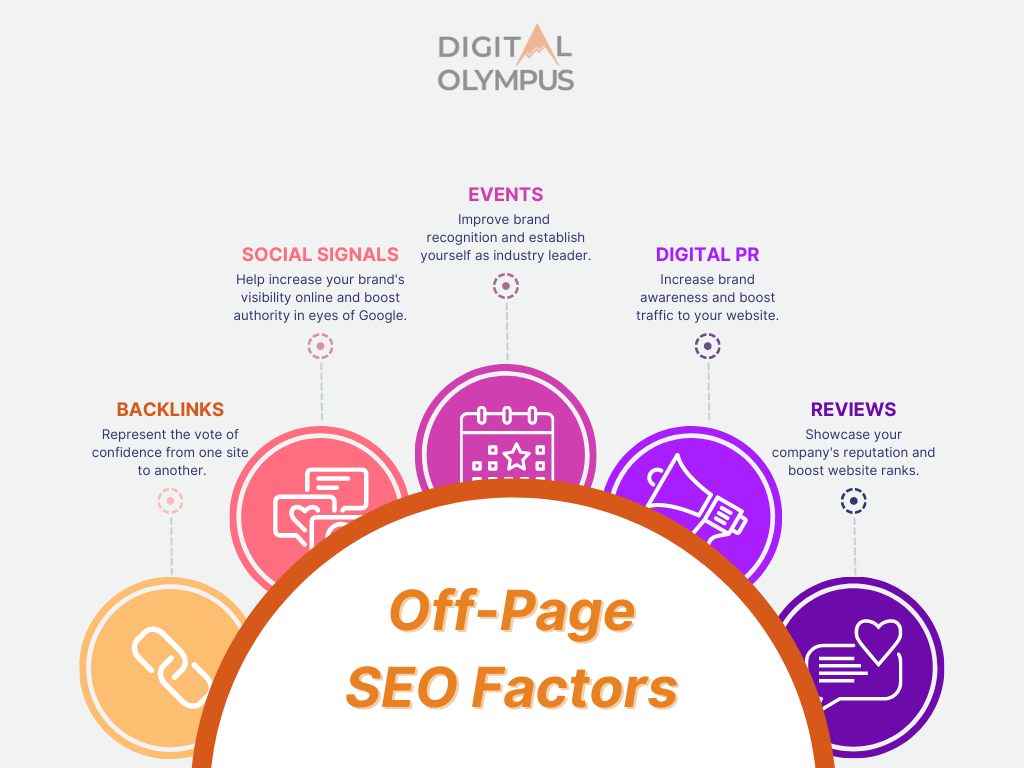
Five off-page factors and their roles.
Let’s now see what each of these components represents.
Factor #1: Backlinks
A backlink (an external link) is a reference from one website to another. Backlinks are the foundation of Google’s PageRank algorithm.
The value of backlinks is not in their quantity but in their quality, which implies that they should be:
- Natural
- Relevant
- Reputable
Instead of explaining each of these components, let us show you an example of a bad backlink.
Take a look at the following excerpt taken from the gardening website:
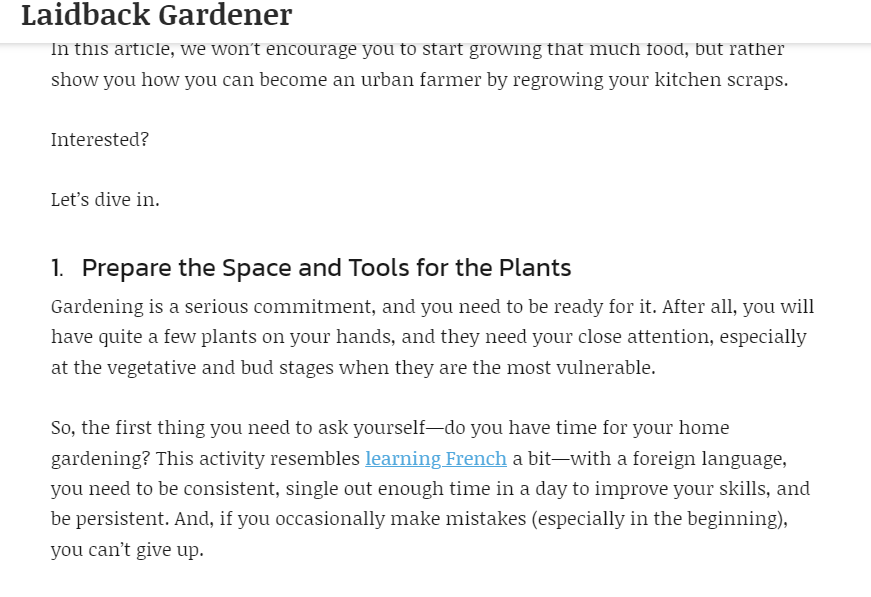
Example of a forced backlink.
From the first look, it may seem that it’s an organic link placement until you check the website it’s referring to — Preply.com, which is a foreign language learning portal. So, not only was this link forced into the content about growing plants at home, but it is also completely irrelevant to the target website. Thus, this link loses two essential components — naturality and relevancy.
Regarding reputability, it means that the website where the link is coming from can be trusted.
And it’s not always about domain authority.
For instance, at Digital Olympus, we deem backlinks from the websites of SaaS services trustworthy. Such businesses continuously invest in SEO, meaning that the value of such links will only grow overtime.
Factor #2: Social signals
A social signal is a collective term for a web page’s visibility on social media.
Below is a typical example of a social signal — Kalicube has made a LinkedIn post featuring our article on SaaS link building, boosting its visibility:
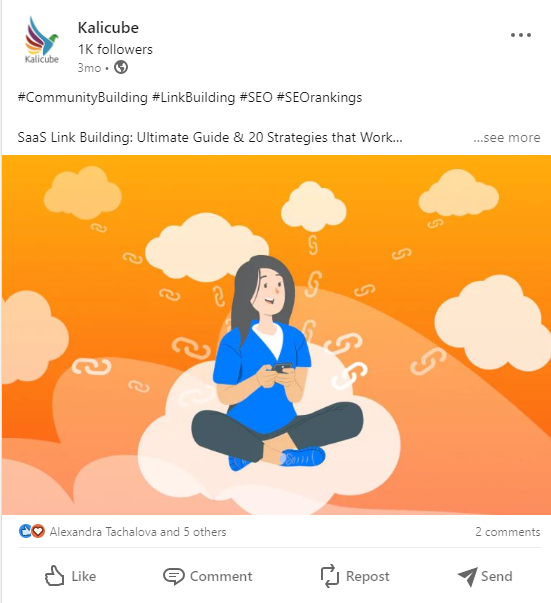
Example of a social signal.
Here’s the thing — Google has never claimed that social signals are a direct SEO ranking factor.
But —
In its SEO Started Guide, Google has stated that instances where the content of a website gets shared add credibility to this site:
«Creating compelling and useful content will likely influence your website more than any of the other factors discussed here. Users know good content when they see it and will likely want to direct other users to it. This could be through blog posts, social media services, email, forums, or other means.
Organic or word-of-mouth buzz is what helps build your site’s reputation with both users and Google, and it rarely comes without quality content." - Google Search Central.
We’ve highlighted the words organic and word-of-mouth for you here, as later in the same guide, Google states that any forceful content promotion via social media channels (e.g., Facebook groups, Reddit communities, etc.) might have negative consequences for your site.
So, to conclude, social signals do matter for your website’s authority, but you need to find that sweet spot between generating the buzz and overdoing it with website promotions.
How can you do that?
Here are some insights from Nikola Roza:
«First, use Quuu Promote to get shares from relevant niche accounts. I submit all important posts on my site that I plan to build links to, and I get dozens of shares in the first week alone.
This sets the stage for me to get my first link, and every Quuu Promote campaign is active for 3 months, giving me hundreds of shares per post.
Second, use Missinglettr Curate, which is a similar service to Quuu Promote, only slightly less popular. Still, you can get dozens of shares within the first month, giving you the validation to build some dofollow links.
Third, be active on social media, especially Twitter, and develop a habit of sharing other people’s content.
They will notice and will start to interact with you and intentionally go to your blog just to share your content. That’s the law of reciprocity working for you, though it’s somewhat unpredictable and much slower than the first two strategies." - Nikola Roza, SEO Expert [website].
Factor #3: Events
By events, we imply any online or offline conferences, webinars, workshops, and other opportunities where you get to promote your business.
Events share the same fate with social signals — Google never directly acknowledged their impact on SEO. They play a secondary role, so to speak, but a crucial one nonetheless.
First and foremost, organizing online events is a surefire way to generate backlinks. To prove our point, here’s the web page of Semrush Academy, where you can find both video courses and webinars, with 1,5K domains linking back to it and solid organic traffic:
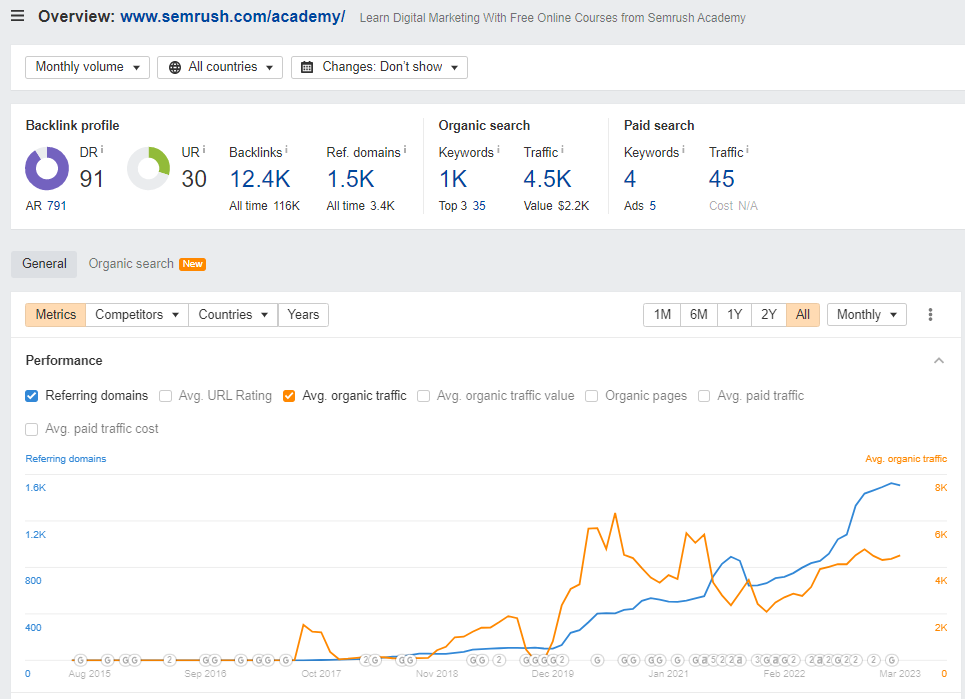
The correlation between referring domains and organic traffic to the Semrush Academy page.
Another thing that is both a byproduct of organizing events is brand awareness. It can either come from the backlinks events generate, people sharing information about them on social media (social signals), or any other source.
Either way, your website gets more authority in Google’s eyes.
Factor #4: Digital PR
Digital PR refers to content marketing strategies marketers employ to boost a brand’s online presence.
Besides online events, digital PR strategies include press releases, mentions in paid media, influencer marketing campaigns (e.g., on social media), etc.
What’s Google’s stance on this off-page SEO factor?
John Mueller has shared via Twitter that digital PR, in some cases, is even more critical than tech SEO, later mentioning that it is possible to rank a website without traffic:
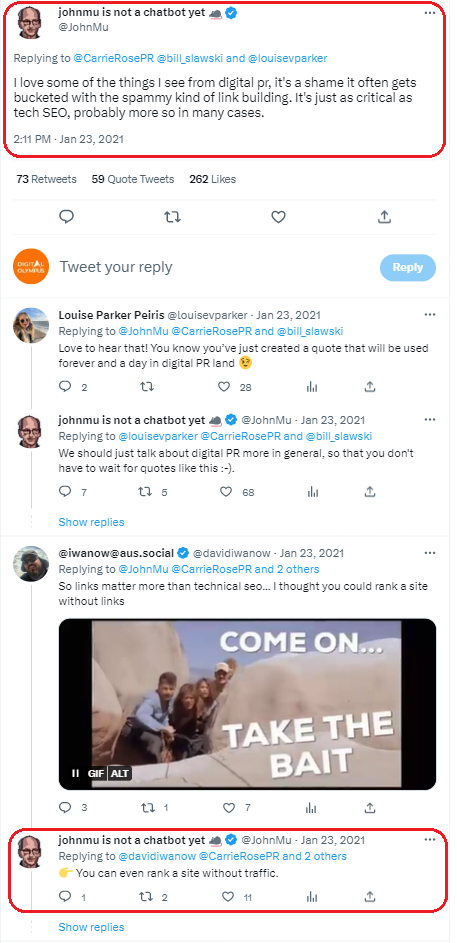
John Mueller on Digital PR.
What John is saying here is that digital PR activities are as important for a website’s ranks as on-page optimization.
Factor #5: Reviews
Reviews are a contributing factor to your site’s authority, and Google considers them when evaluating your site’s E-A-T.
In fact, Google recommends responding to both positive and negative online feedback, sharing that businesses that reply to reviews are 1.7 times more trustworthy.
Furthermore, according to Ahrefs, 17% of SEO experts cite customer feedback as the most important ranking factor for Google’s map pack rankings, and 5% - for organic search in general:

Importance of reviews as a ranking factor — Ahrefs.
However, you should understand that a positive review will have a good impact on your website and vice versa. That’s the reason why Google suggests replying to all feedback about your business online, for instance, on your Google My Business page.
On-Page vs. Off-Page SEO: What are the Differences?
The main difference between on-page and off-page SEO is that the first one is concerned with SEO activities done on the web page, while the second one focuses on efforts to boost a website’s authority from the outside.
That’s pretty much it.
It is essential to highlight here that you can’t choose one over the other when it comes to importance.
Our practice at Digital Olympus has shown that a solid content marketing strategy, which is part of on-site SEO, is a contributing factor in successful link building (an off-page SEO strategy). In fact, this is what inspired us to change our approach to working with clients altogether — all the target pages we build links to should come with high-quality content optimized for the right search intent.
Now Over to You
To summarize, on-page and off-page SEO both focus on helping your website rank higher in SERPs, just with different sets of strategies.
On-page activities include publishing high-quality content matching the intent of your target audience, keyword research, meta tag, alt text, and URL optimization, internal linking, mobile friendliness, website speed, etc. Off-page strategies, among many, include events, digital PR, guest posting, and link building.
By the way, if you want to learn more about different link building tactics, make sure to give other articles on our blog a read.





